How To Take Care Of Eye Health – 10 Simple Principles.

Out of all the organs in the body, the eye is one of the most fragile. Besides the fact that it is the core organ for sight, it’s also the only one of the five major senses with it’s primary functionality out in the open.
That means everyone must take up a proper, constant, and effective eye health routine where every part of the eye is taken care of. But how can you do that?
The first and most important way is to always make the habit of visiting an eye care professional for regular eye exams, inspections, and other treatments. It’s also essential to build on your eye health by taking supplements like vitamins and omega-3 fatty acids.
However, taking care of your eyes goes beyond all of these, and most of all, it starts with the littlest things. That said, here are ten (10) down-to-earth, almost unbelievable ways to take care of your eyes.
1. Keep a Healthy and Balanced Diet

One would think that eating healthy applies to physical ailments and body conditions (like diabetes, weight management, high blood pressure conditions, etc.) However, your eye is also a part of your body, and it gets affected by what you eat. There are foods that increase your eye health, and there are some that increase your risk of developing vision loss or other eye problems.
What foods are not good for the eye?
So, what are the foods that indirectly damage your vision? Let’s look into that.
1. White Bread or Pasta: Everyone knows how delicious spaghetti is, especially when mixed with Italian-inspired meatballs or vegan-inspired mushroom sauce. However, simple carbohydrate foods like white bread or pasta contribute to low vision, but not directly. Simple carbs become sugar as soon as they reach your blood vessels; a continuous intake of this can affect your overall health, and when your health is affected, the eye itself also gets its share of weakness.
2. Foods high in sodium: Besides contributing to high blood pressure, these foods also block the blood flow, which kills the nerves and in turn damages the eye. Some foods in this category include hotdogs, canned foods, and bacon.
3. Foods high in fat: hydrogenated oils, trans fats, or any sort of unhealthy fat are bad for the eye and overall health. These unhealthy fats increase the blood’s cholesterol and hence affect eye sight. Some foods in this category include butter, mayonnaise, salad dressing, and so on.
Note that you don’t have to completely cut out these food items from your list of foods. However, it’s important to reduce your intake of these risky foods to protect your eyes.
What foods are good for eye care?

The following are the foods that are recommended for the health and vitality of your eyesight:
- Foods rich in Omega 3 fatty acids, such as fatty fish (such as salmon, mackerel, trout, sardines, and herring), chia seeds, walnuts, egg yolk, or algal oil.
- Leafy green vegetables like spinach, kale, or collard greens
- Carrots
- Sweet potatoes or any other food rich in beta-carotene.
- Berries: like blueberries, strawberries, or raspberries.
- Citrus fruits
- Nuts and seeds
- Whole grains
- Dark chocolate (when consumed in moderation)
- Water
2. Get a regular eye test
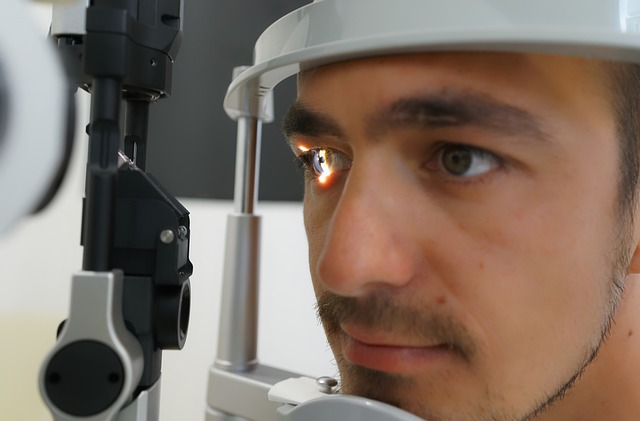
Besides food, another thing that most people don’t know they should do is to make the habit of going to the optician for an eye test. The reason for a test is not necessarily to help treat an eye disease; it is important for the prevention of one. Think of it this way: the reason people conduct medical tests is to monitor the body’s condition, reduce the risk of certain conditions worsening, or help treat minor conditions early on.
This is the same reason an eye test is important for eye care. Doctors need to check your optic nerve and other eye features to see if there are any eye diseases lurking under the surface. If there aren’t, the doctor would also need to check that simple symptoms like dry eyes and discomfort are not underlying eye conditions for something bigger.
In general, an eye test helps to prevent eye diseases while maintaining eye health, and it should be done once a year or every two years, depending on your recommendation from your doctor.
3. Wear sunglasses that block UVA and UVB light

Another way to care for the eye is to protect your eyes from the sun. The thing is that the sun emits harmful UVA and UVB rays that, more likely, can damage our eyes. But how?
Prolonged exposure may increase the risk of developing eye problems like cataracts and macular degeneration. UVB rays mainly affect the cornea, causing sunburn-like symptoms, and UVA rays penetrate deeper, contributing to long-term eye damage that might need vision therapy or even eye surgery at the end of the day.
Therefore, it’s recommended to protect your eyes from the sun and some ways to do that include the following:
Wear safety glasses when you are out in the sun for an activity, and wear sunglasses that block both UVA and UVB rays when you go out. Make these sunglasses a usual practice.
4. Limit your exposure to digital screens

The fourth tip has to do with those who spend forever in front of the computer. In one word, it’s not good for your eye health to spend too much time looking at the screen of any digital device, because the longer the screen time, the more you alleviate eye strain for yourself.
There’s an eye condition called digital eye strain, and it refers to the dry eyes and discomfort caused by prolonged screen time. While this applies to all digital users (TV, computer, phone, smart watch, tablet, etc.), studies have shown that it is mostly related to those who use laptops.
According to the American Optometric Association (AOA), you should rest your eyes every 15 minutes of prolonged computer vision to prevent eye strain. They also advise that computer users make the habit of blinking excessively after prolonged use to flex the eye muscles a bit while working. It has been said that blinking causes immediate relief from eye strain.
Some people also presume that the use of eye drops might help to reduce the risk of developing digital eye strain; however, the best and overall way to go is to reduce how much screen time you have.
How can you tell when you have eye strain?

Just spending a lot of time in front of the digital screen does not automatically warrant computer-caused eye strain; however, there are ways in which you can tell you have the eye condition and would need to act on it:
- You start to have blurred vision that worsens over time.
- You develop headaches either in one part of the head or all over. Persistent eye strain could lead to migraines.
- Your eye starts to feel dry, easily irritated, and has a relatively new (or more extreme) sensitivity to light. You could also experience a slight burning sensation in the eye.
- You have difficulty focusing on the screen, and you sense a slight relief when you look away from the screen.
- The possibility of neck and shoulder pain contributes to the symptoms of eye strain.
In this situation, take the time to rest your eyes by leaving the screen for a while, reduce screen time by a large percentage, and blink to flick your eye muscles. One thing you don’t want to do is rub your eye and then squint.
Rubbing your eyes only makes things worse.

- Increasing irritation: Rubbing your eyes introduces more particles and potential allergens, exacerbating irritation.
- Aggravating dryness: Rubbing can disrupt the tear film, making dry eyes worse.
- Heightening sensitivity to light: Rubbing and squinting may increase sensitivity to light, intensifying discomfort.
- Potentially damaging the cornea: Vigorous rubbing can harm the cornea, leading to further discomfort and potential issues, including possible vision loss.
Therefore, avoid rubbing your eyes to protect your tear film, reduce the risk of aggravating dryness, and most of all, prevent eye infection.
5. Follow the 20-20-20 Rule to Relieve Eye Strain
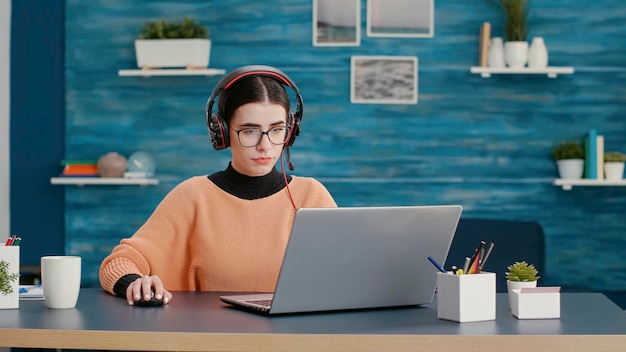
Besides digitally-caused eye strain, people could develop eye strain from even reading for too long. In this case, it is important for everyone to understand and practice the 20-20-20 rule for eye health.
So, how does this eye care rule work?
Invented by optometrist Dr. Jeffrey Anshel, the safety microbreak concept states that in every 20 minutes, you should look at something that is at least 20 feet away for 20 seconds. This eye exercise not only promotes good eye health but also reduces eye fatigue and strain.
6. Remove your contacts before showering, swimming or wetting your face
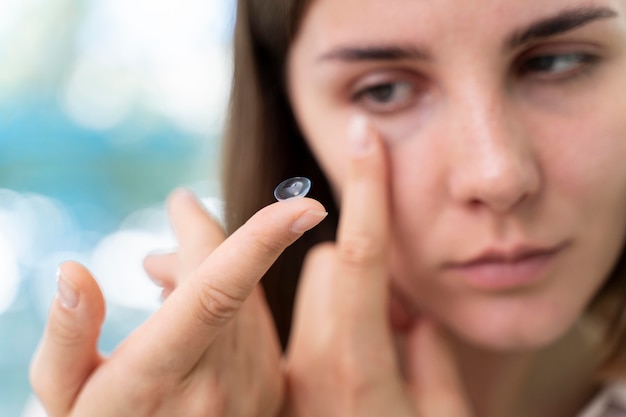
In addition to the previous point, another eye care tip is to consciously manage contacts. If you wear contacts, then you must never bring the lens close to any source of water, either by shower, swimming, or general face wetting.
While other rules are equally important (like avoid rubbing your eyes while wearing contacts, never sleep in your lens, or always moisturize your eyes), wearing your contacts near water is one of the major mishaps that can affect your vision.
As mentioned earlier, your eyes are the only major sense organ that is exposed; therefore, it is easy for them to get infected by foreign objects. However, when you use lenses, the risk increases since the contacts can trap that intruder in your eye for longer. That’s what happens when you introduce water to your eye.
Water generally contains some bacteria and microorganisms that can cause eye diseases or infections. When introduced to the eye, the lens can trap these water droplets, causing the bacteria to do more harm. To protect the eyes, keep your contact lenses and your eye away from water.
7. Quit Smoking for Better Eye Health

This is not just for eye health. It’s recommended to stop smoking for the overall health of a person. However, since this is eye-related, smoking does the following things to eye health:
- Increased Risk of Cataracts: Smoking raises the likelihood of developing cataracts, leading to clouding of the eye’s lens.
- Higher Risk of Macular Degeneration: Smokers face an elevated risk of age-related macular degeneration, affecting central vision.
- Dry Eyes: Smoking can contribute to dry eye syndrome, causing discomfort and irritation.
- Damage to the the Optic Nerve: Smoking may harm the optic nerve, impacting vision and increasing the risk of glaucoma.
- Reduced Blood Flow: Smoking restricts blood vessels, potentially reducing blood flow to the eyes and harming overall eye health.
- Increased Risk of Diabetic Retinopathy: Smokers with diabetes face an elevated risk of diabetic retinopathy, a condition affecting veins and arteries in the retina.
- Impaired Color Vision: Long-term smoking may lead to a decline in color vision.
- Delayed Healing: Smokers may experience delayed healing after eye surgeries or injuries due to compromised blood flow.
- Higher Likelihood of Uveitis: Smoking is linked to an increased risk of uveitis, inflammation of the eye’s middle layer.
8. Stay Hydrated for Moisturized Eyes
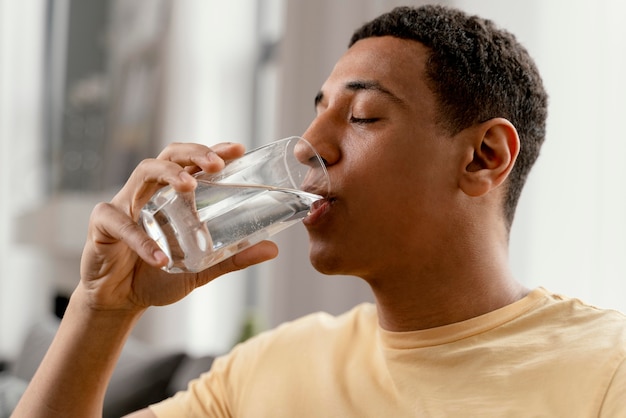
Apart from eating healthy and all those things about omega-3 fatty acids, it’s also important to keep your body hydrated for your eye health. In some cases, just by drinking enough water, you can alleviate some eye conditions. This can happen when relieving dry eyes, reducing eye redness, minimizing eye irritation, and so on.
Other situations that a simple hydration might be able to fix include:
- Alleviation of eye fatigue
- Improved tear production
- Decreased eye strain
- Prevention of dehydrated cornea
- Enhanced overall health and eye comfort
- Reduced blurry vision, and
- Alleviated discomfort in contact lens wearers

The National Eye Institute advises that eye health requires women to have about 2 litres (which is an equivalent of 8 cups) of water daily, while men should take about 2.6 litres (an equivalent of 10 cups).
Not only will drinking water improve the quality of life, but it will also help keep your eyes healthy, moisturized, and free from eye disease.
9. Manage Health Conditions

By now, you might already be able to tell that your health state affects every part of your body, including your eye health. That’s why diabetic patients have retina problems, and those with high blood pressure might face dryness and blurry vision. To improve eye care, you also need to pay attention to and take care of your health.
Therefore, visit your doctor regularly for tests and exams, take your medications when due, eat healthy, take part in exercises, and try to sleep well at all times because proper rest always improves the quality of life.
10. Get a dilated eye exam every two years
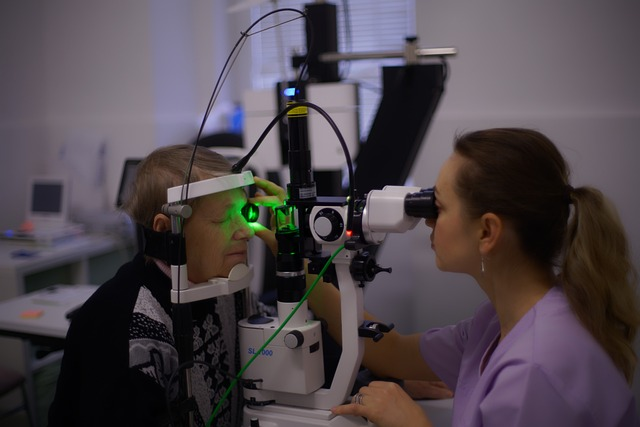
As the last tip on this list of eye care tips, you need to take part in regular eye exams at least once every two years to maintain good eye health. But it’s not just about regular eye exams; you need a dilated one. Here’s the difference:
Regular eye exams check overall vision and eye health, just like the one discussed earlier in this guide.
In contrast, dilated eye exams involve the use of eye drops to widen pupils, allowing a more thorough examination of the retina and optic nerve. Dilated exams help detect issues like glaucoma, macular degeneration, and diabetic retinopathy earlier, promoting proactive eye care.
Top 12 Eye Exercises to Improve your Eyesight

Now that the tips are over and you can boast of being able to take care of your eyes, it’s time to look into some eye exercises to do when you feel eye fatigue, strain, dryness, or short-term blurriness.
These exercises can also be called vision therapy, and you can do them by yourself at home. Like exercises, vision therapy helps when your eyes struggle to work together or if reading gives you a hard time.
That said, here are 12 exercises you can try:
Palming
This vision therapy exercise helps to relax the eye muscles, reduce eye strain, and refresh the eyes after a long day. To do this, cover your closed eyes with your palms, creating a pitch-black environment. Then, after a few minutes, open it up, and your eyes should feel refreshed. You can do this multiple times in a row.
Focus Shifting
Another exercise is to shift your focus between a near and distant object regularly without moving your head. This practice improves the flexibility and coordination of eye muscles, reducing fatigue. Use this when you start to get blurry vision or eye tiredness.
Figure 8: Eye Exercise
You must have heard of this, because it’s a popular exercise that helps to take care of the eyes. All you have to do is imagine a giant figure 8 and trace it out with your eyes by rolling your eye balls in that pattern. By doing this, you’re enhancing eye mobility, which in turn promotes smoother eye movements.
Blinking Exercise
As mentioned earlier, blinking helps to moisturize the eyes, reduce dryness, and promote your eyesight. Also, it’s the easiest exercise to achieve. All you need to do is blink rapidly for a few seconds, and there you have it.
Near and Far Focus
Here, you should focus on a near object, then gradually shift to a distant one. What this does is reduce eye strain and strengthen accommodation (which is the ability to focus at different distances).
Zooming Exercise
To stop your eyes from creating blurred images, hold your thumb at arm’s length and slowly bring it closer, keeping it in focus. This improves focusing ability, enhancing clarity at different distances.
Palming with Visualization
Here, all you have to do is combine eye-palming with visualizing relaxing scenes. Just imagine a satisfying situation as you close your eyes and leave your palm over your closed eye for about 20 seconds. This method reduces stress and promotes mental clarity.
Eye Rolling
Similar to the air ‘figure 8’ exercise, this vision therapy movement also increases eye mobility, reduces stiffness, and improves circulation. To do the eye rolling, gently roll your eyes in a circular motion, both clockwise and anti-clockwise. Do this ten times for each motion.
Pencil Push-Ups
Hold a pencil at arm’s length and bring it closer while keeping it in focus. While this might seem easy, it strengthens eye convergence, which is essential for binocular vision and depth perception.
Trataka (Candle Gazing)
To perform this exercise, you’ll need a candle or any object that provides a natural flame. Then, all you need to do is focus on a candle flame without blinking for as long as you can. This improves concentration and strengthens the eye muscles. Do not use an LED torch light or a phone’s flashlight because this adds to digital eye strain.
Eye Aerobics
Like regular aerobics, move your eyes in various directions—up, down, left, right, and around. What this does is enhance eye coordination and flexibility.
Sun Palming
Finally, sun palming allows the eyes to absorb sunlight, promoting vitamin D synthesis and overall eye health. To do this, close your eyes and face the sun, covering your closed eyes with your palms.

Remember that vision therapy can help provide short-term relief and promote your eyesight. However, this should not be






